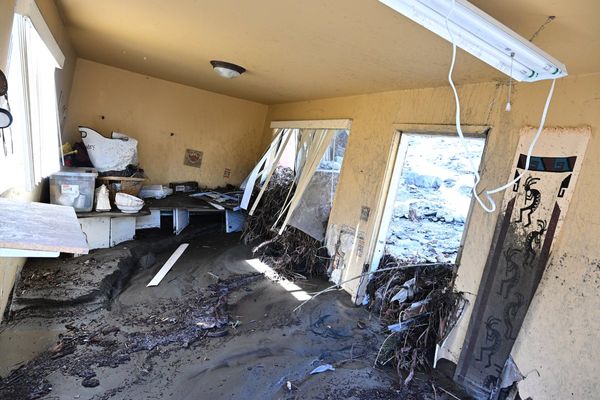
Conservationists are planting trees to lure the endangered glossy black cockatoo back to the South Australian mainland, where it has been extinct for decades.
Two potential “scouting” birds have already been spotted.
For now, the SA subspecies of “glossies” exists only on Kangaroo Island, where it rose from the ashes of the 2019-20 bushfires that destroyed much of its habitat.
Now, Greening Australia and the WWF Australia are planting almost 20,000 trees in the hope of tempting the birds across Backstairs Passage to the Fleurieu Peninsula.
“If we plant it, hopefully they will come, make little cockatoo babies and then spread out and multiply,” the Greening Australia senior program officer, Andrew Woodroffe, said.
Glossy black cockatoos are the smallest of Australia’s black cockatoo species. The males have red or orange stripes on their tails and the adult females have yellow patches on their heads. Young birds have yellow spots on their heads, breasts, bellies and flanks.
Bird pairs mate for life and raise just one fledgling a year. They are vulnerable to habitat destruction through development and flooding, the possums that eat their eggs and young chicks, and threats from galahs, little corellas, sulphur-crested cockatoos and feral honeybees.
The SA subspecies is smaller than those on the east coast, has a more bulbous bill and is endangered whereas the others are listed as vulnerable.
They feed almost exclusively on the seeds of the drooping sheoak and nest in hollows in eucalyptus trees.
In the 1970s much of the glossies’ SA habitat was cleared for development.
By 1995, when recovery efforts began, there were just 158 birds left. The population slowly built up to more than 350 by 2016.
In 2019, bushfires destroyed more than half of the sheoak feeding habitat and almost four in 10 nesting spots. But against all expectations, in 2020 there were 454 birds.
The WWF Australia forests program manager, Ben Sanders, said only about 2% of the original 22,000 hectares of sheoak woodland remains on the Fleurieu.
“Greening Australia and WWF are rebuilding quality habitat and we’re really excited that this could potentially bring glossy black cockatoos back to the mainland,” he said.
They will plant 19,000 trees across three sites – drooping sheoaks for food and eucalypts such as river red gum and pink gum for nesting hollows.
If the plan succeeds, there will be a dense cover of sheoaks within five years. The different sites should help the glossies chance on a new habitat if they make the 14km flight from Kangaroo Island.
Woodroffe said they picked sites based on proximity to the island and the needs and preferences of glossies. They have been collecting seeds from different temperature and rainfall zones to buffer against “whatever climate change brings”. Then they find landholders happy for them to use large swathes of their land to plant trees.
The new habitats would be an “insurance policy” for the population, Woodroffe said.
“There’s already been two sightings in the last six months of juvenile males, which are possibly scouting potential sites for feeding, and they’ve both been luckily close to areas where we’re rolling out the project.”







